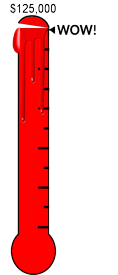

Thanks to your support in 2020!
 Yesterday we had the pleasure of attending the Recycling Council of Ontario Annual General Meeting and Policy Forum on the proposed changes to the Waste Diversion Act.
Yesterday we had the pleasure of attending the Recycling Council of Ontario Annual General Meeting and Policy Forum on the proposed changes to the Waste Diversion Act.
We were fortunate to have representatives of the four major political parties present to offer their party stance on the proposed changes, which gave us a well rounded opinion set and much to think about!
Except for The Conservative Party of Canada that favours abolishing the act, as well as Bill 91, the other parties agreed that Bill 91 has considerable merit, and could be improved once it gets to committee. The general consensus is that it should pass in The House of Commons to committee where the issues in the act can be resolved.
One thing was certain, everyone, including the Conservative Party, are aware that improving waste management is a priority not just for Ontario, but for all of Canada. Everyone may have different ideas on how that should be accomplished, but the fact that everyone is on board to make waste reduction/diversion a priority was very encouraging.
We agree with the Honourable Jim Bradley, our Environment Minister when he said “Ontario’s recycling rates have languished for too long.” We can see however, from the policy discussion in the room, that its not only party leaders that are adamant to increase our waste diversion rate, industries are on board to pitch in as well.
It’s not just about reducing landfills either, although that is the driving force behind Bill 91.
The economic potential when we prioritize harnessing the value of waste is astounding. Mike Shreiner, the leader of Ontario’s Green Party reminded us that for every dollar invested in waste diversion creates 7 jobs, compared to one job when waste is dumped instead.
One of the highlights of the event was a stakeholder roundtable discussion about Bill 91 from industry leaders like:
Christine Bome: Director, Government Affairs, Wal-Mart Canada
Rob Cook: CEO, Ontario Waste Management Association
John Coyne: Vice-President, Corporate Secretary and General Counsel, Unilever Canada
Mirka Januszkiewicz: Director, Waste Management, Region of Durham
Norman Lee: Director, Waste Management, Region of Peel
Candice Malcolm: Ontario Director, Canadian Taxpayers Federation
David Moran: Director, Public Affairs and Communications, Coca-Cola Canada
Jay Stanford: Director, Environment, Fleet & Solid Waste, City of London
They gave us a very thorough analysis on how the bill could be improved, but also about all the potential it holds. One thing is for sure, the panel was very passionate about the environment in general, and waste reduction.
It’s a good thing too, because a reporter for a national environmental magazine commented that compared to the rest of Canada, reporting on Ontario environmental initiatives was “depressing.”
One of the many highlights of the event was a speech by Mr. Arno Rasek presenting on behalf of the Bundeskartellamt (Germany’s Antitrust Enforcement.) Our favourite moment was when someone asked him about how Germany handles waste that has a “negative value.” He said that in Germany, there is no such thing as waste that has a negative value.
It all comes down to investment in green tech solutions to waste management!
Also cool: Did you know that Coca Cola is developing plastic bottles that are plant based instead of oil based? We LOVED that!
Also, a special shout out to Region of Durham. While the rest of the province averages about 24% waste diversion rate, the region of Durham is already at an impressive 54% Bravo!!
What does the Recycling Council Of Ontario think about Bill 91? All the details are here:
https://www.rco.on.ca/rco-submission-on-proposed-waste-reduction-act